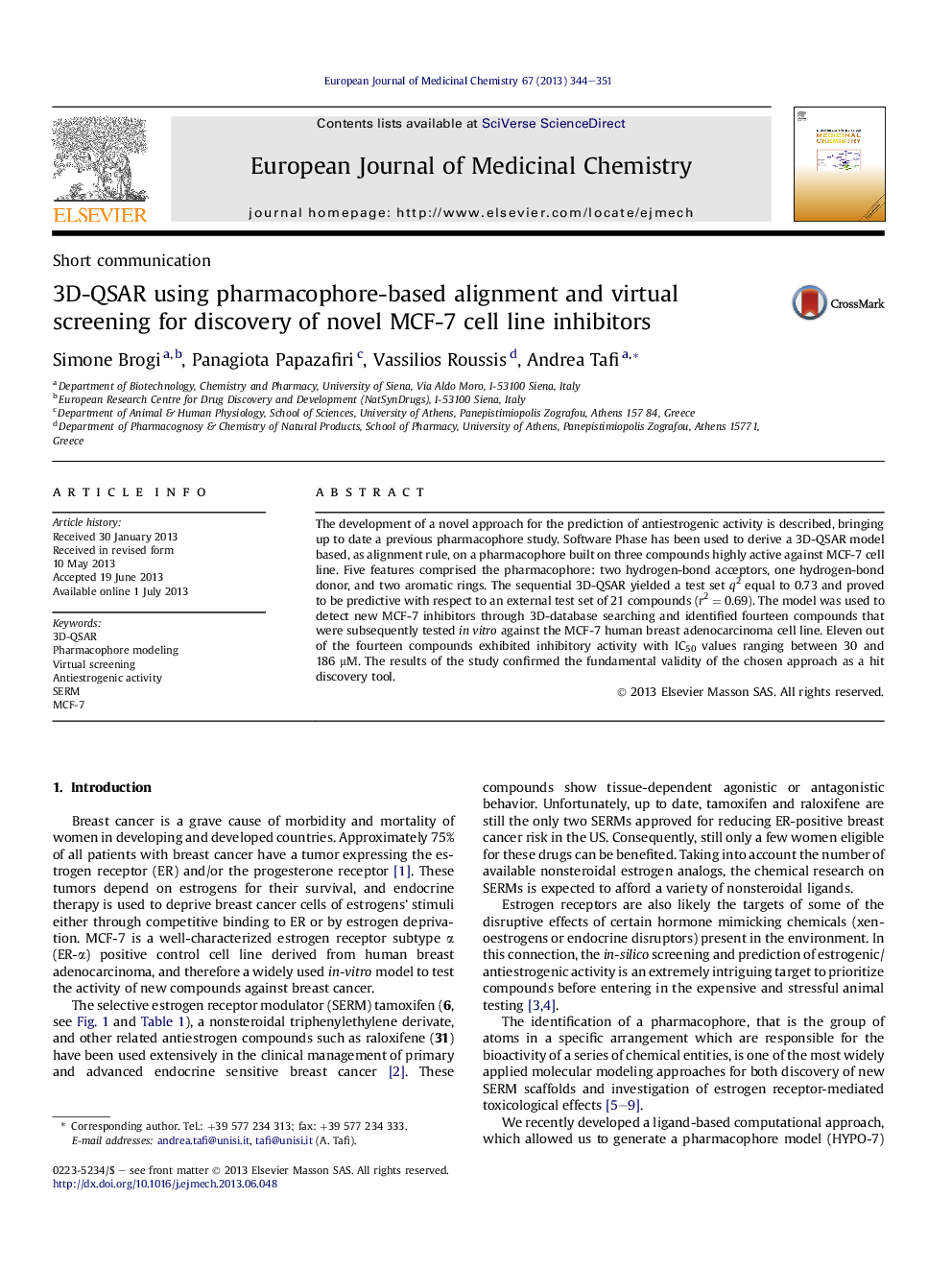| Article ID | Journal | Published Year | Pages | File Type |
|---|---|---|---|---|
| 1392678 | European Journal of Medicinal Chemistry | 2013 | 8 Pages |
•A 3D-QSAR model was built for the prediction of antiestrogenic activity.•Pharmacophore modeling was used to define the alignment rule.•New MCF-7 inhibitors in the micromolar range were detected through 3D-database searching.•The chosen approach proved to be a reliable hit discovery tool.
The development of a novel approach for the prediction of antiestrogenic activity is described, bringing up to date a previous pharmacophore study. Software Phase has been used to derive a 3D-QSAR model based, as alignment rule, on a pharmacophore built on three compounds highly active against MCF-7 cell line. Five features comprised the pharmacophore: two hydrogen-bond acceptors, one hydrogen-bond donor, and two aromatic rings. The sequential 3D-QSAR yielded a test set q2 equal to 0.73 and proved to be predictive with respect to an external test set of 21 compounds (r2 = 0.69). The model was used to detect new MCF-7 inhibitors through 3D-database searching and identified fourteen compounds that were subsequently tested in vitro against the MCF-7 human breast adenocarcinoma cell line. Eleven out of the fourteen compounds exhibited inhibitory activity with IC50 values ranging between 30 and 186 μM. The results of the study confirmed the fundamental validity of the chosen approach as a hit discovery tool.
Graphical abstractA 3D-QSAR model to predict antiestrogenic activity of chemicals using a novel computational approach was developed. The computational model is a useful tool able to identify by 3D-database searching new potential scaffolds active against breast cancer.Figure optionsDownload full-size imageDownload as PowerPoint slide
